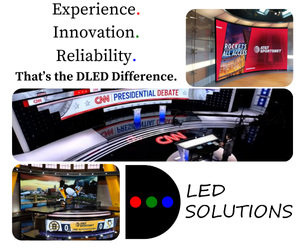Dak’s Take: The attention economy moved on, local news didn’t

Subscribe to NCS for the latest news, project case studies and product announcements in broadcast technology, creative design and engineering delivered to your inbox.
The consolidation wave sweeping through local television has produced impressive quarterly earnings calls. Station groups tout cost synergies, expanded coverage footprints and the operational efficiencies of centralized hubs serving multiple markets. Wall Street nods approvingly at the margins.
But here’s what those earnings presentations consistently omit: the median age of local news viewers now hovers around 60, and nobody seems particularly alarmed about it.
They should be.
While broadcast executives celebrate another round of consolidation-driven efficiencies, an entire generation has already moved on. Not because they’ve rejected local news, but because local news hasn’t shown up where they actually are.
And the gap isn’t narrowing… it’s accelerating.
The attention economy doesn’t wait
The fundamental problem facing local television isn’t competition from other news sources. It’s that younger audiences have fundamentally restructured how they allocate their most precious resource: attention.
Boomers and Gen X still anchor the ratings. They’re the ones keeping the 6 p.m. newscast viable, the ones who remember when “see it tonight at 11” actually created anticipation. Millennials and Gen Z inhabit an entirely different media ecosystem. They’re on YouTube watching 20-minute video essays. They’re on TikTok, discovering news through algorithmic feeds. They’re in Discord servers and Reddit threads debating local issues in real time.
What they’re not doing is setting reminders for the evening news.
And the part that should worry every broadcast executive? It’s not about trust.
Younger audiences don’t actively distrust local news. They simply don’t encounter it. When your product doesn’t exist in someone’s daily scroll, questions of trust never even arise. You’ve achieved something worse than skepticism; you’ve achieved invisibility.
The social media mirage
To their credit, most local stations now maintain social media accounts. They post regularly. They can point to follower counts and engagement metrics. Hell, they even try “live streaming” and some have launched FAST channels.
But scroll through most local news social feeds and you’ll see the problem immediately: they’re glorified clip dumps. A 90-second package from the 6 p.m. show, uploaded to Facebook with the caption “WATCH” and maybe a few relevant hashtags. Perhaps a vertical crop for TikTok if the station is feeling particularly innovative.
This isn’t platform-native content. It’s broadcast content with a social media export setting.
Meanwhile, creators who’ve built massive followings among younger audiences understand something local broadcasters seem to have forgotten: social platforms aren’t distribution channels for your existing product. They’re distinct media environments with languages, rhythms and community expectations.
A TikTok creator covering a local zoning dispute doesn’t produce a 90-second package. They might create a 60-second explainer using text overlays and jump cuts, talking directly to camera. They respond to comments. They create follow-up videos answering questions. The story isn’t a product… it’s a conversation.
Local broadcasters keep treating vertical video as innovation while missing the actual innovation: genuine community engagement happening in comment sections and platform-specific formats they’re not even attempting.
What local news station is active on Reddit? On a community Discord server?
The silence is telling.
The compounding cost of delay
The advertising market has already internalized what broadcast executives seem reluctant to acknowledge: attention has shifted, and dollars will follow.
As millennials age into the coveted 25-54 demo, advertisers aren’t gaining more prospects who watch local news. They’re losing the ability to reach those demographics entirely through traditional television. The viewer pipeline isn’t refilling; it’s running dry.
Consolidation can create short-term efficiencies but doesn’t solve the audience problem. You can’t cost-cut your way to relevance with a generation that’s already opted out.
What’s at stake isn’t just advertising revenue… it’s the position of local authority. Being the lighthouse, as Scripps might say.
For decades, local television stations held a unique position in their communities.
The FCC license didn’t grant that authority; it was earned through consistent presence and community connection. Now that position is increasingly vulnerable. When younger audiences want local information, they’re just as likely to find it from a YouTuber covering city council meetings, an Instagram account documenting neighborhood issues, or a Discord server where residents share real-time updates.
Once that position is ceded, it’s remarkably difficult to reclaim.
What adaptation actually looks like
None of this is insurmountable, but it requires genuine adaptation rather than digital window dressing.
Start with local sports and culture — the entry points where younger audiences are already engaged. Friday night high school football doesn’t need to be a 90-second highlight package at 11 p.m. It can be a live Twitch stream with real-time chat, weekly preview shows with fan polls, player profiles designed for TikTok.
Interactive storytelling creates ongoing engagement rather than one-way information delivery. Ask your audience what stories they want covered. Run polls about local issues. Respond to comments substantively. The technology isn’t complicated; the cultural shift might be.
Consider partnerships with creators who’ve already built followings among the demographics you’re trying to reach. They understand the platforms. They have the audience relationships. These aren’t competitors to be wary of; they’re potential collaborators.
The broadcast signal can remain the “big tent” — the live breaking news, the severe weather coverage, the tent-pole programming that still draws audiences. But the distributed brand needs to live natively on each platform with content designed specifically for that environment and community.
This requires investment in people who actually understand these platforms.
Local television has always been built on relevance and community connection. Younger audiences are still hungry for trustworthy local voices. They care about their communities. They want reliable information about what’s happening where they live.
They haven’t rejected local news; they’ve simply moved to where the conversations are actually happening.
Consolidation addresses yesterday’s challenges. It creates efficiency in a declining business model. What it doesn’t do is build the audience relationships that will sustain the industry a decade from now.
If local television stations continue treating digital and social media as afterthoughts, places to dump clips from the real product, they’ll keep serving a shrinking, aging audience until the economy becomes untenable. The efficiencies of consolidation might delay that reckoning, but they won’t prevent it.
Local broadcasters can choose to adapt — to meet younger audiences where they are, to build distributed brands across platforms, to reimagine what local journalism looks like in an attention economy. Or they can continue optimizing a business model that’s becoming less relevant with each passing quarter.
One path is difficult but sustainable. The other is efficient but terminal.
The generation you’re losing isn’t waiting for you to decide.
Subscribe to NCS for the latest news, project case studies and product announcements in broadcast technology, creative design and engineering delivered to your inbox.







tags
Dak's Take, social media
categories
Heroes, Journalism, Local News, Social Media, Voices